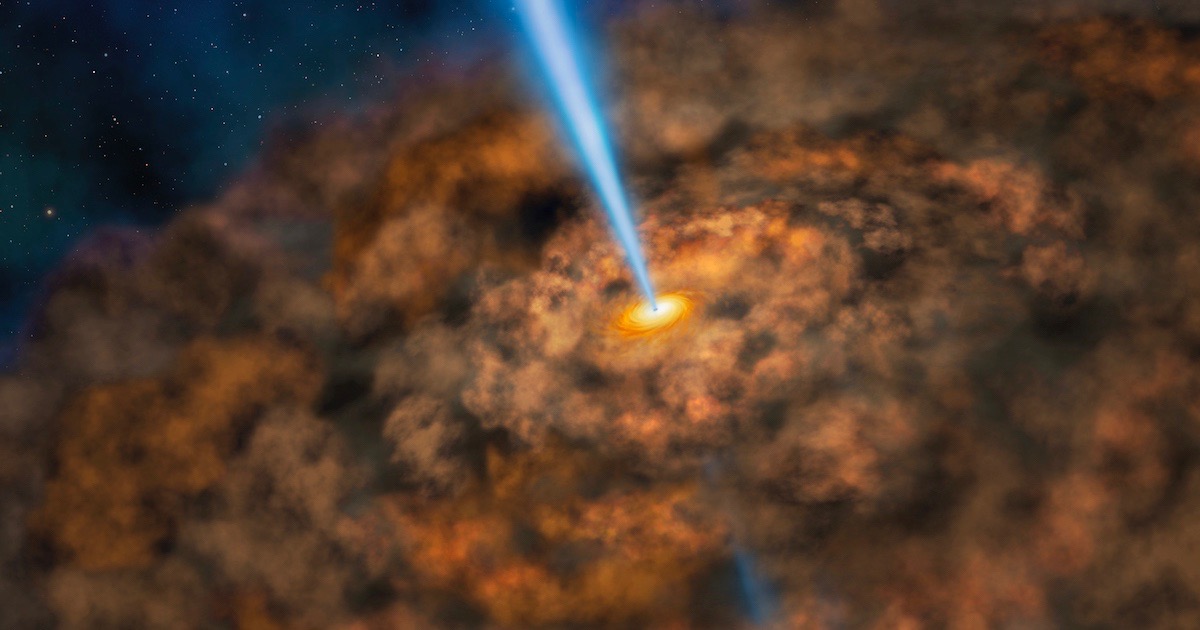 Faith & Science
Faith & Science
 Intelligent Design
Intelligent Design
 Physics, Earth & Space
Physics, Earth & Space
What Becomes of Science When the Evidence Does Not Matter?


Fine-tuning of the universe is so unpleasant a subject for materialists that it cannot really become a controversy. The desired evidence favors a random universe, accidentally spilled. Differing points of view on the findings would, of course, be funded by the government. But the randomness would be agreed upon up front.
On the other hand, if evidence matters, our universe appears fine-tuned.
In the end it is not really an issue about the evidence. Help! we are drowning in evidence! The universe’s expansion speed is said to be just right for life, the Higgs boson seems to be fine-tuned, and Earth has a “unique” iron signature, just as a few examples.
This from Natalie Wolchover at Quanta Magazine: “As things stand, the known elementary particles, codified in a 40-year-old set of equations called the ‘Standard Model,’ lack a sensible pattern and seem astonishingly fine-tuned for life.” Why does being fine-tuned for life “lack a sensible pattern”? What if that is the pattern?
The alternative sounds like saying that the letters STOP on a sign do not form a sensible pattern.
Cocktail napkin objections are always on offer, to be sure. For example, we are informed that evidence no longer counts the way it used to: We evolved to see patterns where there are none (the “staggering genius” of Charles Darwin). Indeed, the Principle of Mediocrity is now a guiding assertion. The Birthday Problem is often used in pop science to claim that we underestimate what sheer randomness can do: “In a room of just 23 people there’s a 50-50 chance of two people having the same birthday. In a room of 75 there’s a 99.9% chance of two people matching.” Yes, but that embarrasingly familiar social icebreaker speaks only to what we might randomly guess, not to facts about our universe.
We are also told that the universe, apart from our planet, is hostile to life. But if ours is a dedicated environment, could it not be like the human womb during a pregnancy: Life outside is hostile? How does that come to mean that there is no design? Would the circumstances not suggest the opposite?
Some ask, how could a designer know what to do, in order to create a universe and intelligent life? Well, it is hard to say, as we have never come close to that ourselves. Perhaps we should try it before offering criticism. Others ask, “Who designed the designer?” which feels somewhat like asking, “How did my old math teacher, who explained why one cannot divide by zero, come to exist?” Is there no point at which a given trail of enquiry legitimately ends?
Some questions do require a more thoughtful response: Astrophysicist Ethan Siegel informs us at Forbes that the odds of our existence are not infinitely small, as we might have supposed, because our existence “already disproves that possibility!” But wait. We are not talking about the odds of an incidental unusual event but those of a long pattern of statistically abnormal events. Similarly, design is held in some quarters to be an argument from ignorance: “We also cannot rule out hitherto unknown naturalistic causation.” No, but we cannot rule out fairies at the bottom of the garden either. What’s realistic?
Canadian teacher Tim Barnett offers, by way of illustration of the problem of what to rule out: A lucky poker player has been dealt five royal flushes, noting that the probability of getting a single royal flush is one in 649,739… “After the fifth royal flush, you insist that I’m cheating. That is, I’m designing the outcome. But what if I responded, “Yes, five consecutive royal flushes is highly unlikely, but unlikely things happen all the time. In fact, for you to exist your mom and dad had to meet, fall in love, and have sex…” Does anyone ever use such a standard in real life?
Lawyer Barry Arrington plaintively asks, Why won’t these “improbable things happen all the time” people play poker with me?
Barnett notes, “It’s not merely the high improbability of an event that leads to a design inference. It’s the high improbability combined with an independently specified outcome that leads to the conclusion of design.” Presumably, that is why the cocktail set won’t play poker with Arrington.
And then religion looms: Christian evolutionists have begun to quarrel with fine-tuning, a development predicted by Wayne University biologist Wayne Rossiter in his Shadow of Oz: Theistic Evolution and the Absent God, (pp. 106, 153) At BioLogos, Casper Hesp argues, “I believe it is unwise to turn fine-tuning into an argument based on the gaps in our understanding, because the properties of the universe could become more amenable to scientific explanation in the future.” That is a curious approach: Has Hesp any reason to expect that more discoveries will lead to fewer perceptions of fine-tuning? The trend has been very much the opposite.
Recently, atheist cosmologist Andreas Albrecht has also warned “deeply religious” people not to put their faith in “apparent” fine-tuning: “And when people do engage in these debates, they seem to find a reason to believe what they want to believe, regardless of how the science unfolds.”
But in this case, the evidence favors the “deeply religious.” Why should they not put their faith in it? And the future of science may depend in part on how the tension between evidence and naturalism plays out in a basic issue like this.
Image credit: NASA/SOFIA/Lynette Cook.
